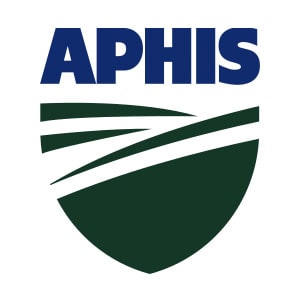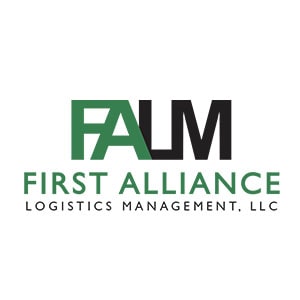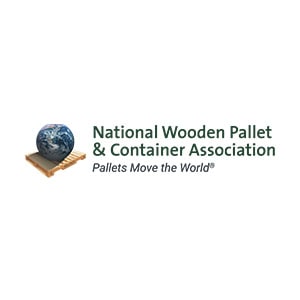How to Conduct a Unit Load Device Serviceability Check

Performing a Unit Load Device serviceability check can be vital to keeping your air freight operations safe and efficient. Here are a few things to know about performing a ULD serviceability check.
Air cargo vs. ocean freight
Whether you are considering an air or ocean route for your next cross-country excursion, there are many factors to consider before you embark on the trip of a lifetime. But what about the most crucial question, how do you know which freight carriers will get you where you want to go? If you are a small business owner, you may wonder where to start, where to send your freight, and what carriers are for you. If you are already an airline or sea carrier customer, you should know the new and improved ways to get your goods where they need to be. This article will examine the pros and cons of air and ocean-based shipping routes and help you choose the exemplary service for your company.
If you are looking for a no-frills method of getting your cargo to its destination, consider using an air freight company. They can offer a lower cost and shorter distance to your destination in many cases. They will also be more efficient and agile than sea carriers. Plus, they will be the first to offer you the latest and greatest equipment, which is a must if you want to compete in today’s high-tech global marketplace.
Aside from air carriers, it would help if you also considered using a shipping services provider that can transport your cargo by rail or road via pallets. This will make it easier for you to get your shipment where you need it while avoiding costly mistakes and wasted time. Similarly, if you are a large or medium-sized business, you will be more likely to find a freight forwarder that can get your goods to their destination on time and within budget. And you don’t have to worry about getting stuck on a ship when a storm blows in.
Purpose of a ULD serviceability check
Performing a Unit Load Device serviceability check is critical to the aircraft flight safety process. When performed, it can ensure that the load is secure during flight, which protects passengers, crew, and other aircraft systems.
Before loading or unloading a unit load device, it must be checked for damages. If damage is visible, it must be repaired before loading it on an aircraft. In addition to visually detecting damage, the damage must be compared to the limit of component damage. This allows operators to assess whether the limit is being exceeded.
Depending on the type of unit load device, operators must meet specific requirements to ensure that it is capable of meeting flight safety standards. These include meeting specific limitations such as the maximum gross weight and center of gravity. Also, the operator must ensure that it meets the required technical specifications.
The operator ensures that the unit load device is structurally sound and available to meet global air cargo needs. The operator must also monitor the operation of the unit load device. This involves checking for structural defects, ensuring proper storage, and ensuring that the unit load device is clean and debris-free.
Besides the operator, many other parties are involved in the ULD handling process. This includes third-party vendors and ground handlers. It is essential to ensure that each party is adequately trained on ULD handling procedures. In addition, operators must take a course on ULD build-up, which teaches them the necessary skills to build and store unit load devices safely.
The operator must also keep the unit load device in compliance with the IATA ULD Regulations, which includes SS 40/0. The device must show essential information about the owner, operating specifications, and flight safety standards. In addition to the SS 40/0, operators must meet other requirements, such as a manufacturer’s plate and a three-letter prefix identifying the type of ULD and the airline that owns it.
ULDs can be used to carry a wide variety of cargo. These include pallets, which can be used on wide-body aircraft, or containers, which can be used on specific narrow-body aircraft.
Training required for ULD operations
Despite the widespread use of ULDs in air freight transport, ULD operations and handling require ongoing training. This is primarily performed by service providers who are not highly regulated. However, the aviation industry’s regulatory requirements are the same for ULDs as other aircraft parts. Therefore, the process must be carefully managed to ensure safety breaches are detected and corrected each time.
The first step in ULD operations and handling is recognizing the different types of ULDs. This knowledge helps establish routines and improve the quality of the ULD build-up.
The correct operation and handling of a ULD contribute to the efficiency of air transport. However, ULDs can be damaged during transport. This can be a severe hazard to both the aircraft and cargo. Moreover, the damage can be highly costly to the aircraft operator.
For aircraft operators, ULDs are an essential part of their aircraft systems. In addition, they are a crucial component of aircraft flight safety. This means that any ULD not in proper condition presents a hazard to the aircraft and the cargo.
To address these risks, the International Air Transport Association (IATA) published ULD regulations and standards. This provides a simple point of reference for common carrier requirements. Several other countries also have complementary standards for ULD certification.
ULD CARE, a Canadian not-for-profit organization, also issued a code of conduct. This code is non-binding, but it establishes the expectation for activity and provides a foundation for service providers and airlines.
The ULD industry is in a period of transition. Technology innovations are making tracking ULD assets easier and increasing attributable responsibility for them. In addition, new companies are joining the registry.
The ULD community is a vibrant one. Its members work together to develop and implement safe and efficient ULD operations and handling. In this regard, ULD CARE has released a series of 60-second videos to help ULD operators and handlers understand the basic principles of ULDs and to raise awareness.
ULDs are an essential part of airline operations. However, they are often transported, stored, and misused. Moreover, ULDs may only sometimes be equipped with the necessary restraints.
IATA’s trusted resource for air cargo safety
The correct information is one of the most important ways to ensure air cargo safety. Whether you’re shipping by air or ground, the IATA’s trusted resource for air cargo safety can help you ensure a safe and efficient transportation experience.
The International Air Transport Association (IATA) is a global trade body with 290 member airlines that makes up 83% of global air transportation. IATA works closely with industry to improve efficiency, reduce emissions, and create standards to support international trade. IATA also has a range of initiatives to help the environment and combat wildlife trafficking.
IATA’s trusted resource for air cargo security is the IATA Dangerous Goods Regulations Manual. This user-friendly reference provides comprehensive, up-to-date information on how to ship dangerous goods by air. It has been widely adopted as a reference by airlines worldwide. It can be purchased as a printed book or digital download.
Another IATA tool is the Direct Data Solutions (DDS) tool, which provides carriers with access to a global dataset of airline data. The information allows companies to make data-based decisions to optimize operations. The information can also be used to benchmark themselves against competitors.
IATA has also developed several coding systems to facilitate the identification of luggage, airports, and airlines. These systems allow for the identification of banned substances, as well as the identification of airports and airlines.
An additional IATA program, the Advanced Cargo Analysis System (ACAS), has been designed to assist CBP in identifying high-risk air cargo before loading. CBP will then be able to issue DNL instructions to carriers when a threat is in progress.
ACAS pilot participants transmit their data timely. Using real-time data and joint agency management, the program has proved to be highly beneficial. However, the information cannot be linked to a specific flight or an airport.
The ACAS pilot is part of a broader effort by the International Air Cargo Association to develop air cargo security programs. The data collected by the ACAS program can be used to identify air cargo that poses a higher risk of terrorism.










Leave a Reply